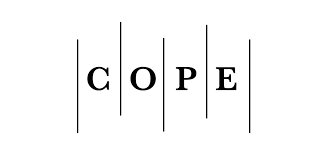A Secure and High Capacity Image Steganography Approach Using Huffman Coding and RSA Encryption
DOI:
https://doi.org/10.29304/jqcm.2023.15.2.1231Keywords:
Capacity, Image Steganography, Huffman, RSAAbstract
Steganography is the practice of hiding data, such as images, videos, or text, within a cover image without it being detectable by the human eye. Several factors, such as the capacity, security, and robustness of the technique, are essential when transferring information using this method. In this study, we propose a new approach to image steganography that improves the Least Significant Bit (LSB) technique by utilizing images of 24 bits in each pixel. Improving the capacity and security of LSB-based steganography requires a combination of techniques, such as indirect embedding, embedding in multiple channels, and applying cryptographic and compression techniques. This approach conducts by encrypting each compressed secret message bit with the most significant bit of the red channel and then saving the output bit (hidden bit) in the least significant bit of the (green/blue) channel according to the row value (odd/ even). To further security, the suggested approach uses multi-level encryption; employs RSA to encrypt the secret message before applying the Huffman compression and encrypting the hidden bit by (XOR/XNOR) in the embedding method based on the row value of the pixel. Meanwhile, it is planned to use the Huffman coding technique to shorten the length of the encrypted message that will be inserted in the cover image. For the color photos in this work, the standard images were acquired from a standard dataset (USC-SIPI). The suggested approach performs better when measured in terms of mean square error (MSE), peak signal-to-noise ratio (PSNR), and comparison to findings from related prior efforts.
Downloads
References
[2] R. H. Ali and J. M. Kadhim, “Text-based Steganography using Huffman Compression and AES Encryption Algorithm,” Iraqi J. Sci., vol. 62, no. 11, pp. 4110–4120, 2021, doi: 10.24996/ijs.2021.62.11.31.
[3] G. Maji and S. Mandal, “Secure and robust image steganography using a reference image as key,” Int. J. Innov. Technol. Explor. Eng., vol. 8, no. 7, pp. 2828–2837, 2019.
[4] R. Atta and M. Ghanbari, “A high payload steganography mechanism based on wavelet packet transformation and neutrosophic set,” J. Vis. Commun. Image Represent., vol. 53, pp. 42–54, 2018, doi: 10.1016/j.jvcir.2018.03.009.
[5] K. Shabnam, S. & Hemachandran, “LSB based Steganography using Bit masking method on RGB planes,” Int. J. Comput. Sci. Inf. Technol., vol. 7, no. 3, pp. 1169–1173, 2016.
[6] D. R. I. M. Setiadi, “Improved payload capacity in LSB image steganography uses dilated hybrid edge detection,” J. King Saud Univ. - Comput. Inf. Sci., vol. 34, no. 2, pp. 104–114, 2019, doi: 10.1016/j.jksuci.2019.12.007.
[7] Y. Wang, M. Tang, and Z. Wang, “High-capacity adaptive steganography based on LSB and Hamming code,” Optik (Stuttg)., vol. 213, pp. 1–9, 2020, doi: 10.1016/j.ijleo.2020.164685.
[8] M. Cem kasapbaşi and W. Elmasry, “New LSB-based colour image steganography method to enhance the efficiency in payload capacity, security and integrity check,” Sadhana - Acad. Proc. Eng. Sci., vol. 43, no. 5, pp. 1–14, 2018, doi: 10.1007/s12046-018-0848-4.
[9] Ahmed, A. and A. Ahmed, “A Secure Image Steganography using LSB and Double XOR Operations,” 2020.
[10] A. Y. Hindi, M. O. Dwairi, and Z. A. AlQadi, “A Novel Technique for Data Steganography,” Eng. Technol. Appl. Sci. Res., vol. 9, no. 6, pp. 4942–4945, 2019, doi: 10.48084/etasr.2955.
[11] M. H. Mahdi, A. A. Abdulrazzaq, M. S. Mohd Rahim, M. S. Taha, H. N. Khalid, and S. A. Lafta, “Improvement of Image Steganography Scheme Based on LSB Value with Two Control Random Parameters and Multi-level Encryption,” in IOP Conference Series: Materials Science and Engineering, 2019, vol. 518, no. 5, pp. 1–14, doi: 10.1088/1757-899X/518/5/052002.
[12] Z. S. Younus and M. K. Hussain, “Image steganography using exploiting modification direction for compressed encrypted data,” J. King Saud Univ. - Comput. Inf. Sci., vol. 34, no. 6, pp. 2951–2963, 2022, doi: 10.1016/j.jksuci.2019.04.008.
[13] R. M. Neamah, J. A. Abed, and E. A. Abbood, “Hide text depending on the three channels of pixels in color images using the modified LSB algorithm,” Int. J. Electr. Comput. Eng., vol. 10, no. 1, pp. 809–815, 2020, doi: 10.11591/ijece.v10i1.pp809-815.
[14] H. K. Tayyeh and A. S. A. Al-Jumaili, “A combination of least significant bit and deflate compression for image steganography,” Int. J. Electr. Comput. Eng., vol. 12, no. 1, pp. 358–364, 2022, doi: 10.11591/ijece.v12i1.pp358-364.
[15] O. F. A. Wahab, A. A. M. Khalaf, A. I. Hussein, and H. F. A. Hamed, “Hiding data using efficient combination of RSA cryptography, and compression steganography techniques,” IEEE Access, vol. 9. pp. 31805–31815, 2021, doi: 10.1109/ACCESS.2021.3060317.
[16] A. Jeromel and B. Žalik, “An efficient lossy cartoon image compression method,” Multimed. Tools Appl., vol. 79, no. 1–2, pp. 433–451, 2020, doi: 10.1007/s11042-019-08126-7.
[17] F. Adhanadi, L. Novamizanti, and G. Budiman, “DWT-SMM-based audio steganography with RSA encryption and compressive sampling,” Telkomnika (Telecommunication Comput. Electron. Control., vol. 18, no. 2, pp. 1095–1104, 2020, doi: 10.12928/TELKOMNIKA.v18i2.14833.
[18] S. Bhargava and M. Mukhija, “Hide Image and Text Using Lsb, Dwt and Rsa Based on Image Steganography,” ICTACT Journal on Image and Video Processing, vol. 9, no. 3. pp. 1940–1946, 2019, doi: 10.21917/ijivp.2019.0275.
[19] K. Sailunaz, M. Rokibul Alam Kotwal, and M. Nurul Huda, “Data Compression Considering Text Files,” Int. J. Comput. Appl., vol. 90, no. 11, pp. 27–32, 2014, doi: 10.5120/15765-4456.
[20] A. Gupta, A. Bansal, and V. Khanduja, “Modern lossless compression techniques: Review, comparison and analysis,” 2017, doi: 10.1109/ICECCT.2017.8117850.
[21] Stuti Patel, “Enhancement in PSNR using Inverted LSB Mechanism,” Int. J. Eng. Res., vol. V4, no. 10, 2015, doi: 10.17577/ijertv4is100572.
[22] M. Yadav and A. Dhankhar, “Image Steganography Techniques: A Review,” IJIRST, vol. 2, no. 2, pp. 243–248, 2015.
[23] I. J. Kadhim, P. Premaratne, and P. J. Vial, “Improved image steganography based on super-pixel and coefficient-plane-selection,” ScienceDirect, vol. 171, no. 107481, pp. 1–20, 2020.
[24] N. Subramanian, O. Elharrouss, S. Al-Maadeed, and A. Bouridane, “Image Steganography: A Review of the Recent Advances,” IEEE Access, vol. 9. pp. 23409–23423, 2021, doi: 10.1109/ACCESS.2021.3053998.
[25] R. Wazirali, R. Ahmad, A. Al-Amayreh, M. Al-Madi, and A. Khalifeh, “Secure watermarking schemes and their approaches in the iot technology: An overview,” Electron., vol. 10, no. 14, 2021, doi: 10.3390/electronics10141744.
[26] A. A. Zakaria, M. Hussain, A. W. A. Wahab, M. Y. I. Idris, N. A. Abdullah, and K. H. Jung, “High-capacity image steganography with minimum modified bits based on data mapping and LSB substitution,” Appl. Sci., vol. 10, no. 11, pp. 1–19, 2018, doi: 10.3390/app8112199.













